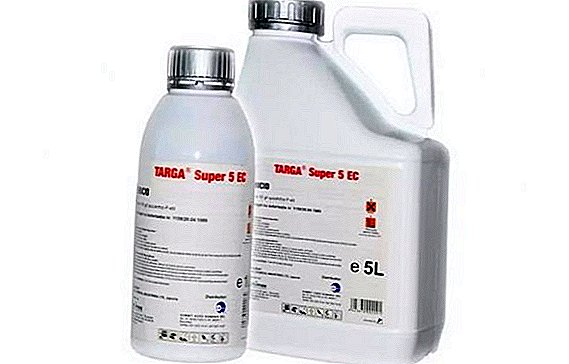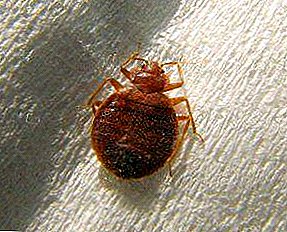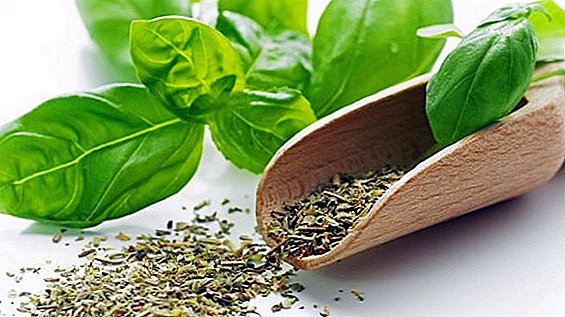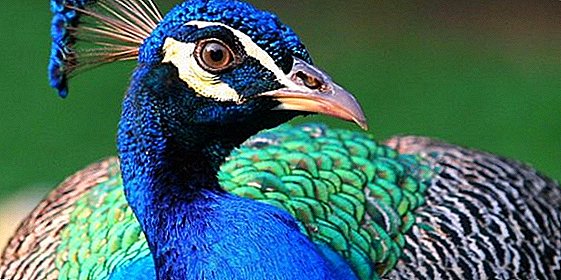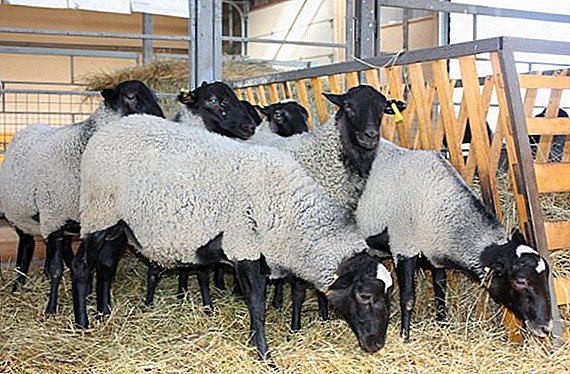 Farmers who choose a sheep herd as their object of care deserve all praise. A sheep is a cute and touching animal that is prone to a huge number of diseases whose treatment is often inconclusive or it simply does not exist. It is necessary to invest a lot of work in creating the right conditions of housing, in the hygiene and nutrition of their pets in order to get a healthy and productive herd.
Farmers who choose a sheep herd as their object of care deserve all praise. A sheep is a cute and touching animal that is prone to a huge number of diseases whose treatment is often inconclusive or it simply does not exist. It is necessary to invest a lot of work in creating the right conditions of housing, in the hygiene and nutrition of their pets in order to get a healthy and productive herd.
Sheep Non-contagious Diseases
Such diseases are not transmitted from one animal to another and are more likely to depend on poor conditions and poor nutrition. Water quality and rare exercise can also affect. To understand that the sheep is sick, you can by external signs, as well as measuring the temperature and pulse rate. In a healthy individual, the temperature is 38–40 ° C, the pulse has 70–80 beats. 
Arthritis
In sheep, the joints become inflamed and deformed. Symptoms are as follows:
- swelling of the affected area;
- almost complete rejection of the movement due to pain;
- lameness;
- raskoordination;
- temperature rise.
Treatment:
- adding alfalfa to the diet;
- reducing the amount of concentrated feed;
- massage of the affected joint;
- ointment with an irritating effect.
Learn how to cure sheep and goats from smallpox.
Bezoar disease
It means that the sheep begin to eat their wool, and its undigested clumps (bezoar stones) accumulate in the stomach. Farmers who do not follow the diet of their wards face this: poor-quality food, lack of vitamins, lack of balance in the diet.  Symptoms:
Symptoms:
- hyperexcitability;
- groans;
- cardiopalmus;
- bluish tinge of mucous membranes;
- loss of appetite.
Important! If there are symptoms indicating an infectious disease, it is necessary to immediately isolate the sick animal and call the veterinarian.There is no treatment that can bring results from a bezoar disease. The organization of proper nutrition of animals will exclude its appearance.
White muscle lambs disease
This disease affects most often newborn lambs. Its reason is the lack of vitamins in the diet of a sheep wearing a lamb.
Symptoms:
- puffiness appears;
- seizures seize limbs;
- lameness occurs;
- the animal shows lethargy;
- the breath of the lamb quickens.
 There is no cure, and the mortality rate is impressive - up to 60%. Only with the help of the correct diet of sheep can eliminate the likelihood of white muscle disease in lambs. Nutrition should include vitamin E and minerals (for example, selenium).
There is no cure, and the mortality rate is impressive - up to 60%. Only with the help of the correct diet of sheep can eliminate the likelihood of white muscle disease in lambs. Nutrition should include vitamin E and minerals (for example, selenium).Bronchopneumonia
Dangerous and most common disease. Often at risk are lambs just born. The causes of the disease are dampness in the pen, drafts. If there are too many sheep in the barn, then there is a release and a large accumulation of ammonia gases, which also provoke the disease. The sooner the disease is detected, the more effective the treatment will be.
Symptoms:
- loss of appetite;
- persistent strong cough;
- hard breath;
- runny nose with purulent discharge;
- heat.
Treatment:
- antibiotics prescribed by a veterinarian (benzylpenicillin, streptomycin, sulfadimesin, etc.).

Conjunctivitis
Parasites and poisonous herbs can cause conjunctivitis. Symptoms depend on the form of the disease.
With catarrhal form:
- eyes closed partially or completely;
- conjunctiva red or swollen;
- photophobia developed;
- tears are flowing.
When purulent:
- pus is secreted;
- the edges of the eyelid cover the ulcers.
With phlegm:
- swelling of the mucous eyes;
- conjunctival bulging.
 There is also a follicular form in which follicles swell in the third century. They cautious lyapisnoy pencil. For all other forms of treatment is washing the patient's eye with solutions (for example, furatsilina or boric acid), as well as lubrication with corticosteroid ointments (or ointments containing antibiotics).
There is also a follicular form in which follicles swell in the third century. They cautious lyapisnoy pencil. For all other forms of treatment is washing the patient's eye with solutions (for example, furatsilina or boric acid), as well as lubrication with corticosteroid ointments (or ointments containing antibiotics).Did you know? Sheep has a great memory.
Scar flatulence
Treats digestive pathologies, arises in connection with poor nutrition. One of the scars stops working.
Symptoms:
- increased anxiety of the animal;
- loss of appetite;
- severe swelling due to gas accumulation in the rumen.
Treatment:
- installation of a special vapor pipe;
- scar puncture (if the tube did not help).
You will also be interested to learn about such diseases in animals as foot and mouth disease, African swine fever and mastitis.
Poisoning
Poisonous plants are found on the pasture; therefore, it is very difficult to save the herd from poisoning. For lambs whose body is not prepared yet, the disease can have a tragic outcome.  Symptoms:
Symptoms:
- loss of appetite;
- frequent, loose stools;
- ejection of vomitus;
- elevated temperature.
The treatment consists in washing the stomach:
- saline solution (a tablespoon of salt per half liter of warm water);
- vegetable oil (100 g).
Paronychia (hoofed rot)
It consists in the inflammation of hoof pulp. At an animal difficulties in movement, lameness are noted. In this case, the veterinarian cuts the hooves slightly to lower the pus and alleviate the condition of the animal. 
Did you know? Despite the advanced technology, synthetic reconstruction of sheep wool is still impossible.
Fractures
If your sheep has a fracture, you will easily notice this by the following features:
- severe pain shock in an animal;
- bone mobility;
- deformed broken parts;
- swelling in a sore spot.
For drugs that also fight against viral infectious diseases in animals include "Fosprenil", "Tromeksin".Treatment:
- fixing bandage or plaster;
- complete rest for a sick animal;
- an increase in vitamins and minerals in the diet;
- massage (according to the purpose of the veterinarian).
 A plaster cast is applied in a spiral. If the affected tissues are found at the fracture, the sore spot is washed with soapy water and treated with an antiseptic. A bandage is then applied (gypsum is inappropriate in this case) with a fixing aluminum rod or wooden stick.
A plaster cast is applied in a spiral. If the affected tissues are found at the fracture, the sore spot is washed with soapy water and treated with an antiseptic. A bandage is then applied (gypsum is inappropriate in this case) with a fixing aluminum rod or wooden stick.Myositis
The disease affects the sheep's muscular system. It becomes denser, swelling and tenderness appear upon contact with something. If we are talking about limbs, then there may be added limp to the symptoms. Physiotherapy treatment and warm compresses - this is the secret to combating myositis. A late-diagnosed disease leads to an abscess, which requires the intervention of a veterinarian. An abscess is opened and further treatment is carried out with antibiotics. 
Stomatitis
The causes of inflammation of the mucous membrane of the oral cavity are in the rough, prickly, spoiled food, and also if the food is too hot or too cold.
Symptoms:
- redness of the mouth;
- swelling of the tongue;
- gray plaque on the root of the tongue;
- profuse salivation;
- smell of rot from the mouth;
- difficulty in eating (food drops out of the inflamed mouth).
Treatment:
- eliminate roughage;
- wash the oral cavity with one of the solutions: boric acid (2%), salt (1-2%), soda (2-3%), tannin (0.5%).
Important! Many diseases are easier to prevent than to cure. Do not neglect preventive measures.
Tendenitis (inflammation of tendons)
Inflammation can occur with various injuries, less often due to infection penetration.  Symptoms:
Symptoms:
- crouching on one limb;
- swelling in a damaged area;
- soreness;
- heat.
The treatment is as follows:
- the animal is provided with peace;
- apply cold to the swollen place;
- a pressure bandage is applied;
- in places of inflammation, small punctures are made to release the accumulated fluid there;
- puncture sites are treated with antiseptics.
It will be interesting for you to get acquainted with such breeds of sheep as merino, gissar, romanov sheep, edilbayevsky, fine-fleeced.
Cystitis
This disease, which is inflammation of the bladder, is triggered by an infection of the kidneys, udder, uterus, or other nearby organs.
Symptoms:
- frequent urination with concomitant pain;
- on the contrary, containment of urine;
- gibbosity;
- temperature rise.
 Treatment:
Treatment:
- the diet changes: more light food, more drink;
- the animal is regularly given salt and benzoic acid;
- the bladder is flushed (as prescribed by a veterinarian);
- injections are given (antibiotics and sulfonamides).
Eczema
In the presence of allergic reactions, as well as due to improper nutrition and maintenance, the skin of the animal may be inflamed.
Symptoms:
- cutaneous papules or scabs;
- redness and itching;
- growth of pustules and vesicles;
- loss of appetite, leading to exhaustion.

Infectious
Infectious diseases of sheep are contagious and non-infectious. The former are dangerous in that they can be transmitted to other sheep, and sometimes to humans. With the same infection, an animal can have a few pains in its life.
Rabies
Contagious viral disease transmitted through saliva. It affects the central nervous system. Rabies can become infected not only by animals that have come in contact with a sick individual, but also by humans. This virus is afraid of high temperatures, as well as acid-base disinfection. The symptoms of quiet and violent forms are different.
Silent form:
- not stopping hoarse mooing;
- copious saliva;
- uncoordination of movements;
- loss of appetite;
- development of paralysis.
Wild form:
- extreme aggression to their companions, to dogs;
- severe self-injury;
- digging holes due to aggressive throwing on a leash.
 There is no effective treatment, therefore, noticing the manifestations described in one of the sheep, the farmer must immediately isolate and slaughter it. The animal carcass is completely destroyed. Preventive measures include rabies vaccines, as well as the timely reduction of the stray dog population near their farm.
There is no effective treatment, therefore, noticing the manifestations described in one of the sheep, the farmer must immediately isolate and slaughter it. The animal carcass is completely destroyed. Preventive measures include rabies vaccines, as well as the timely reduction of the stray dog population near their farm.Bradzot
Acute poisoning, in which the causative agent causes inflammation of the abomasum and poison the body of the animal with toxins.
Symptoms:
- convulsive movements;
- flatulence;
- grinding of the jaw;
- movement disorder.

Did you know? Dolly the sheep is none other than the world's first cloned mammal.
Brucellosis
Chronic infection caused by Brucella bacteria. Dangerous to humans. Causes a miscarriage in a pregnant sheep and the detention of the afterbirth. In rare cases, paralysis of the hind limbs is possible. The rest of brucellosis is asymptomatic, which is the most dangerous.
Treatment is impossible, the sick animal is isolated and completely destroyed. The best preventive measure is to prevent the infected individual from entering the herd. Therefore, a new sheep is desirable to check with the vet for the presence of brucellosis.
Hyperplasia (pulmonary adenomatosis)
In adenomatosis of the lung, epithelial cells expand, affecting the respiratory tract. This phenomenon is accompanied by a strong cough, difficulty breathing, discharge from the nose. Sometimes symptoms are absent. Cases of this disease are carefully recorded. Unfortunately, it is not possible to cure hyperplasia. The sick animal is subject to isolation and slaughter, with subsequent disposal in accordance with sanitary standards.
Listeriosis
Severe damage to the nervous system by bacteria (Listeria). The disease can be transmitted to humans. A sick sheep transmits bacteria to a healthy airborne, contact, and also through fecal masses.
Symptoms:
nerve type:
- depressed state;
- loss of appetite;
- profuse tearing;
- convulsions;
- diarrhea;
- neck curvature;
- photophobia.
- mastitis;
- abortion;
- afterbirth delay.
- feverish state;
- gastroenteritis;
- pneumonia.
 Septic and asymptomatic types also exist. Treatment (effective in the early diagnosis of the disease) is carried out by the introduction of tetracycline until complete recovery.
Septic and asymptomatic types also exist. Treatment (effective in the early diagnosis of the disease) is carried out by the introduction of tetracycline until complete recovery.Prevention:
- regular disinfestation;
- checking food for freshness and purity;
- timely vaccination.
Mastitis infectious
Lack of basic hygienic standards of sheep content often leads to inflammation of the udder - mastitis. Pus may flow from the udder, the body temperature of the sick animal rises significantly. Mastitis is treated with antibiotics and sulfonamides. When a relapse occurs, the udder is cut out. Effective prevention will be regular washing, as well as treatment of the udder before milking. After milking, an antimicrobial agent can be applied to the udder.
Agalactia
This disease may accompany mastitis if the sheep is pregnant or just gave birth.  Symptoms:
Symptoms:
- miscarriage in a pregnant individual;
- conjunctivitis;
- sore joints;
- loss of appetite;
- udder redness, soreness with pressure;
- changing the color of milk.
Smallpox
Acute disease that has purulent rashes all over the body.
Symptoms:
- purulent discharge from the eyes and nose;
- rash on all low-haired skin areas (head, legs, tail, udder);
- the formation of gray-white papules with a reddish rim at the site of eruptions;
- necrosis of papules;
- joint damage (in hemorrhagic form);
- spontaneous abortion
Treatment:
- blood plasma globulin proteins;
- antibiotics (for the prevention of complications);
- ointment for softening pockmarks;
- Iodine solution for cauterization of ulcers;
- rinsing eyes and nose with chamomile extract.

Pasteurellosis
The pathogen is the microorganism Pasteurella, which enters the bloodstream. From infected sheep is transmitted through a variety of physiological fluids: mucus from the nose, urine, feces. The disease is dangerous for humans.
Symptoms:
- heat;
- loose stools;
- weakened condition;
- frequent cough with wheezing;
- anemia.
Treatment:
- hyperimmune serum;
- tetracycline and sulfonamides;
- symptomatic treatment.
Prevention:
- timely vaccination;
- regular disinfection of pens;
- isolation of sick animals.

Salmonellosis (paratyphoid)
A common disease among young animals. The body of the lamb is infected during the period of milk change for complementary foods and affects the internal organs (lungs, liver, etc.). Half of the reported cases are fatal.
Symptoms of the acute form of the disease:
- chills and fever;
- significant temperature increase;
- bloody diarrhea with mucus;
- heavy breathing, interrupted by spasms;
- loss of appetite (rejection of udder or nipples).
Treatment:
- antibiotics (for example, chlortetracycline);
- sulfonamides;
- nitrofuran preparations.
 The surviving individuals form a lifelong immunity. Still, it is better not to allow the disease: do not neglect vaccination, feed the lambs with premixes with beneficial bacteria, disinfect pens.
The surviving individuals form a lifelong immunity. Still, it is better not to allow the disease: do not neglect vaccination, feed the lambs with premixes with beneficial bacteria, disinfect pens.anthrax
Extremely contagious, transient disease. May be transmitted to man. Microbial bacillus pathogen has a high resistance to external effects: so, to clean the contaminated water, you will need to boil it for more than an hour. Sheep get infected through contaminated grass, water, or feed. Tumors appear on the body of the animal, turning into ulcers. Such tumors sometimes cover the internal organs (lungs, intestines).
Important! You cannot cure anthrax yourself. In case of the slightest suspicion, immediately contact your veterinarian!Symptoms (except ulcers) vary depending on the course of the disease.
In acute form:
- persistent tremor;
- cyanosis of the eye membranes, redness of the mucous membrane of the eye;
- swelling of the scar.
- hyperexcitability;
- heat;
- cyanosis of the eye membranes;
- convulsions before dying.
In chronic form:
- strong weight loss;
- inflammation of the submandibular and pharyngeal lymph nodes;
- swelling of the lower jaw.
Treatment:
- anthrax serum;
- gamma globulin injections;
- penicillin group antibiotic injections.
Prevention:
- vaccinations twice a year (for adult sheep);
- vaccination of young stock every 3 months, starting from three months of age.

Enterotoxemia
Very serious microbial disease affecting the nervous system. It has several types: acute, subacute, hyperacute and chronic. Even at the subacute stage, a sheep can be saved by the introduction of antibiotics, in other cases the treatment is ineffective.
Symptoms:
- strong flow of saliva;
- shortness of breath, especially after exercise;
- Gastrointestinal Disorder;
- secretion of mucus from the nasal sinuses.
Foot and mouth disease
Severe disease, with a high risk of rapid spread of the disease.It is characterized by the fact that aphthas appear on the body of the sheep - small tumors in the form of blisters. The causative agent of the disease hence has the name aftovirus. The mucous membrane of the mouth, the udder and the hoof slit of a sick animal undergo erosion.  The virus is dangerous for its resistance to environmental factors, as well as the fact that it has many varieties. So, having had one strain, the same animal does not have immunity to another. Infection occurs through the waste products of a sick sheep or a sheep carrier of the virus. Can get sick and man.
The virus is dangerous for its resistance to environmental factors, as well as the fact that it has many varieties. So, having had one strain, the same animal does not have immunity to another. Infection occurs through the waste products of a sick sheep or a sheep carrier of the virus. Can get sick and man.
Symptoms:
- sharp rise in temperature;
- aphas form in and around the mouth, between the hoofs;
- aphthas can break through, leaving red marks;
- miscarriages occur in pregnant individuals.
Treatment:
- tumors in the oral cavity and around it are treated with a solution of potassium permanganate;
- make injections with antibiotics, glucose, heart drugs;
- hooves washed in formalin bath.
Pregnant sheep: what you need to know.
Parasitic
Most parasitic diseases of sheep are just as dangerous for humans. Carriers of a particular pathology are most often ticks. Timely disinfection of stalls and pastures, as well as vaccinations and preventive de-worming will protect against many diseases.
Helminthiasis
One of the most common diseases of chronic leakage, caused by parasitic worms - helminths. May be transmitted to man. Worms parasitize in the liver, lungs, intestines and other organs.  Symptoms:
Symptoms:
- hair loss;
- loss of appetite;
- severe exhaustion;
- loose stools;
- numbness of the limbs.
Check out the meat and dairy breeds of sheep.
Dicroceliasis
Parasite - trematode dicrotelea. The course of the disease is chronic, infection occurs by ingestion of carrier ants along with grass on pasture. Inflamed bile ducts, cirrhosis of the liver develops.
Symptoms:
- exhaustion against loss of appetite;
- decrease in productivity;
- lag in growth and development.
Invasion of ostertagia
In the abomasum of the animal, parasites-ostertagy settle. The larva of the parasite sheep can swallow on a pasture or in a reservoir.  Symptoms:
Symptoms:
- extreme weakness;
- exhaustion;
- swelling in the submaxillary region;
- constant thirst;
- frequent diarrhea.
Tick-borne encephalitis
A disease that affects the nervous system and leads to paralysis. Mite is dangerous for humans.
Symptoms:
- heat;
- feverish state;
- general weakness, lethargy.
 If in the first days the animal did not die, then there is a chance for independent recovery.
If in the first days the animal did not die, then there is a chance for independent recovery.Melophagus
In the wool of sheep, flies, runes, lay eggs, which provoke strong scabies in animals.
Symptoms:
- wool tearing;
- loss of milk;
- loose stools;
- extreme exhaustion.
Did you know? We say "white crow", and in Europe - "black sheep".The disease spreads quickly, so the affected individuals are isolated from the herd and are treated with insecticides with a repetition in 20-30 days.
Moniesiosis
The causative agent is the parasite cestode, which enters the sheep’s body on wet pastures. 
Symptomatology (by type of infection):
toxic:
- complete refusal of food;
- anemia;
- painful, depressed state;
- loose stools;
- back bending during bowel movement.
obstructive:
- colic;
- pressing the head to the stomach;
- riding an animal on the ground.
nervous:
- uncoordination of movements;
- involuntary drooping of the head;
- bedsores
Piroplasmosis
Carriers of the disease are ticks. Piroplasma (parasite) destroys red blood cells.
Symptoms:
- high temperature (42 ° C);
- depressed state;
- icteric mucus;
- rapid breathing and heartbeat;
- cachexia;
- brown color of urine.
Treatment:
- an aqueous solution of azidine at a concentration of 7%;
- diamedine injections;
- vitamin b 12 (intramuscular injections);
- heart drugs.
 A disease can kill an animal in four days. Therefore, it is best to take care of the safety of the herd in advance and treat the pasture with acaricides. Before being sent to pasture, sheep are treated with repellents, and every 10 days - the preparation is berenil.
A disease can kill an animal in four days. Therefore, it is best to take care of the safety of the herd in advance and treat the pasture with acaricides. Before being sent to pasture, sheep are treated with repellents, and every 10 days - the preparation is berenil.Psoroptosis
Scabies caused by ticks. Ticks feed on fluid and lymph, pulling them out of the skin of the affected animal.
Symptoms:
- severe itching in the back;
- strong molt;
- compaction of the affected skin;
- blisters and crusts on the skin;
- heat.
Treatment:
- baths with hexaline or creolin;
- ivomek, butox injections.
 Psoroptosis
PsoroptosisStrongyloidiasis
Parasitic pathogens settle in the mucous membrane of the small intestine. Hardest of all the disease suffers young. Infection occurs on pastures and in pens, but it can also be carried out in utero.
Symptoms:
- pruritus;
- restless behavior;
- coughing;
- loose stools or constipation;
- high temperature;
- exhaustion;
- lag in growth.
Tayleriosis
The causative agents of the disease are Theileria parasites that affect the bone marrow, liver and spleen.
Symptoms:
- swollen lymph nodes;
- heat;
- disorders of the digestive system;
- heart rhythm disorder.
 Theiley parasites.
Theiley parasites.Treatment:
- tetracycline antibiotics;
- vitamin b 12;
- ascorbic acid in aqueous solution;
- 7% azidine solution.
Fascioliasis
The causative agents of the disease are trematodes (genus fasciol), parasitic in the liver. Symptoms may vary depending on the type of fasciola, on the age of the animal, on the state of its body.
The sheep case is valuable advice for beginning sheep farmers.
Symptoms:
- bloody diarrhea, interspersed with constipation;
- temperature rise;
- dyspnea;
- anemia;
- pallor of conjunctiva;
- hair loss;
- exhaustion.
Zenuroz (knuckle)
Helminthiasis caused by cystode larvae settling in the brain and spinal cord. Another name for cerebral cenurosis is knuckle. Infected susceptible young up to two years. The most common distributors of parasites are shepherd dogs in contact with the flock.  Symptoms:
Symptoms:
- fearfulness;
- muscle spasms;
- involuntary drooping of the head;
- spinning in one place;
- paralysis.
Echinococcosis
Common disease. It consists in the fact that echinococci settle in the internal organs. First, the disease is asymptomatic, you can notice any signs only after the passage of time.
Symptoms:
- loose stools;
- almost complete loss of appetite;
- extreme exhaustion.
There is still no effective treatment for echinococcosis.  Keeping animals is hard work, and you need to carefully think through all the necessary safety measures in order not to have serious consequences. Pasture processing, preventive vaccinations, competent conditions of maintenance and proper diet are albeit not final, but the same components of success. There are diseases that are not able to prevent even the most zealous sheep breeder. But the general strengthening of the immunity of animals, undoubtedly, will give its fruits and become the key to high resistance to any disease.
Keeping animals is hard work, and you need to carefully think through all the necessary safety measures in order not to have serious consequences. Pasture processing, preventive vaccinations, competent conditions of maintenance and proper diet are albeit not final, but the same components of success. There are diseases that are not able to prevent even the most zealous sheep breeder. But the general strengthening of the immunity of animals, undoubtedly, will give its fruits and become the key to high resistance to any disease.
Reviews




